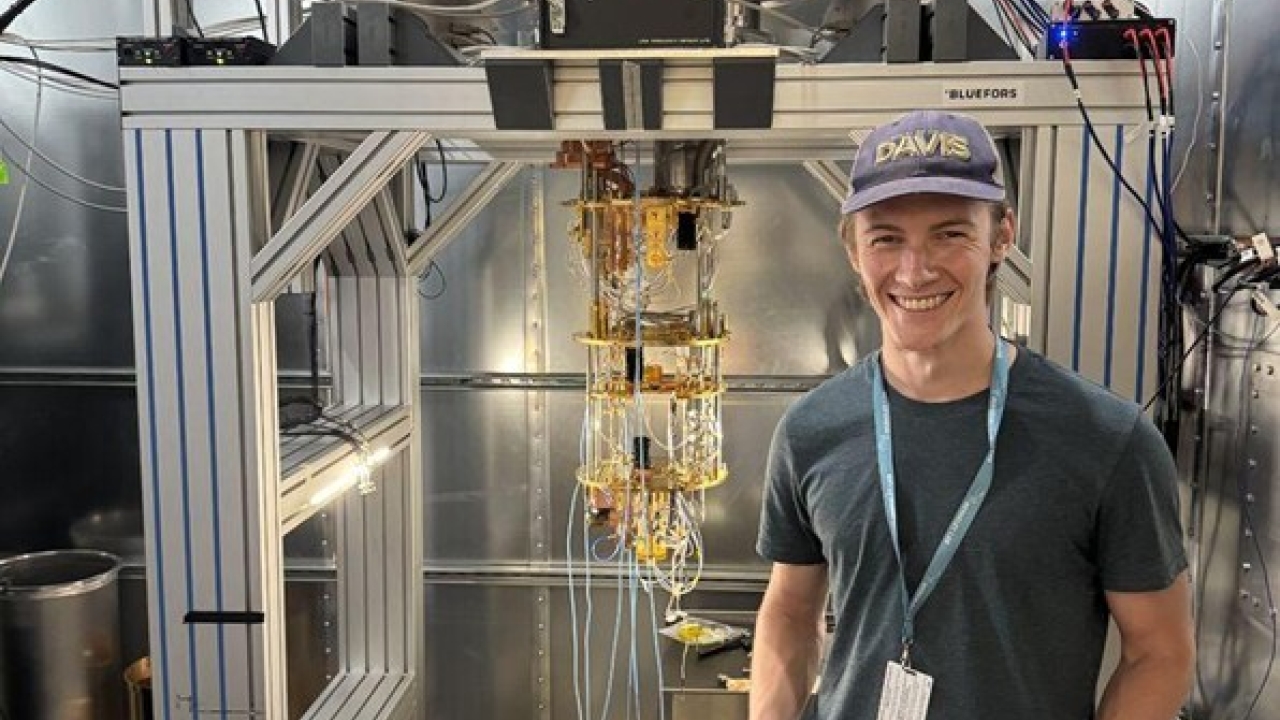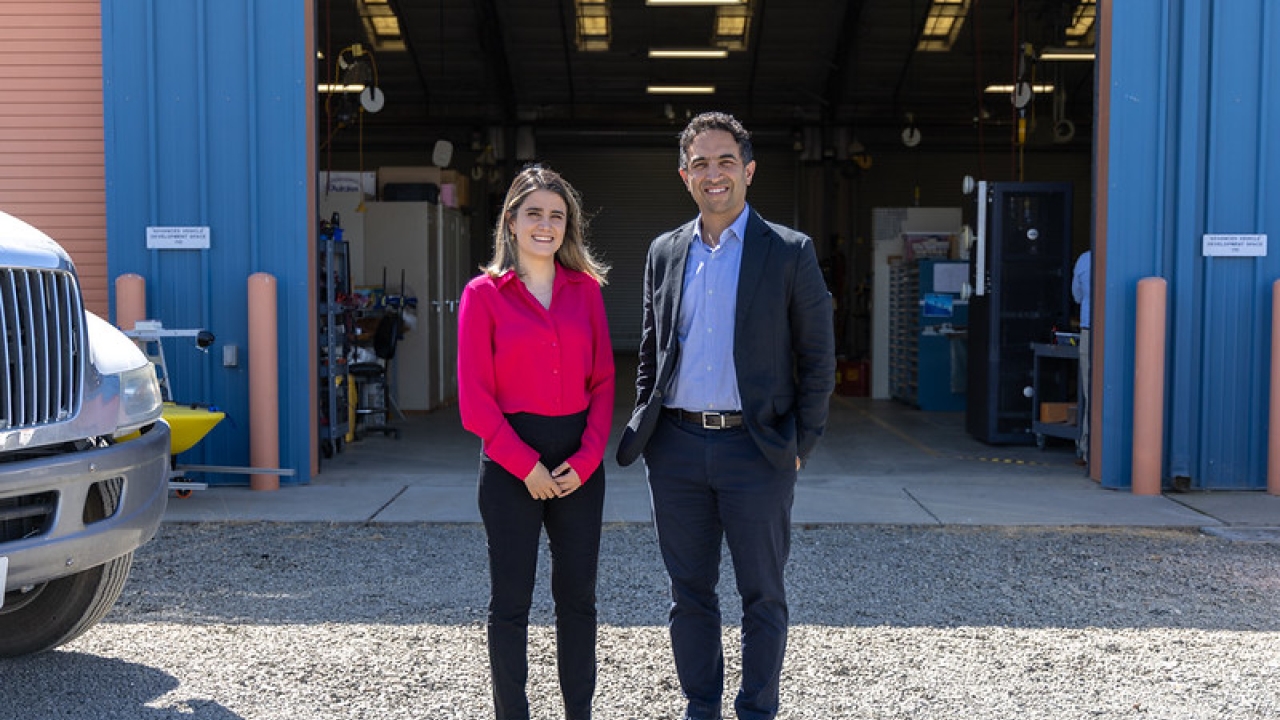Biography: Maury Hull
All career engineers build things as kids, and Maury Hull was no exception. His childhood was spent in the country, in Virginia, where his family owned two acres of pine trees. “I’d cut down trees and construct multi-level log houses,” he recalls, “both tree houses and things on the ground.
“And I also had an extensive set of Lionel trains. That was a blast!”
Today, Hull is an emeritus professor in the UC Davis Department of Biomedical Engineering and directs several ongoing research programs in musculoskeletal biomechanics in the College of Engineering, where he has been a faculty member since the fall of 1976. He directs the campus’ Orthopedic Biomechanics Laboratory and the Biomechanical Engineering Laboratory, and is intimately involved with the Biomedical Engineering Graduate Group and the Mechanical Engineering Graduate Group.
His own undergraduate career began at what then was the Carnegie Institute of Technology, where he entered as a chemical engineering major. He shifted to civil engineering, and then was persuaded to embrace mechanical engineering after taking a class in the mechanics of solids from C. Daniel Mote (“a very cool professor who just was selected to be the next president of the National Academy of Engineering”).
After graduating from the newly renamed Carnegie Mellon in 1969, Hull followed Mote to UC Berkeley and tackled a master’s project that complemented his twin interests in cycling and alpine skiing.
“I developed a special transducer that could be put in a ski,” Hull explains, “which would measure the contact pressure between the snow and the ski. The idea was to have a series of these along the length of the ski, so you could measure the inputs to the ski.”
Hull remained at UC Berkeley for his doctorate, as well, once again focusing on how best to prevent injuries during skiing accidents. “My proposal was funded by the National Science Foundation,” he recalls, with a smile. “It was an expensive project, because it required the extensive development of custom instrumentation. We built instruments designed to mount on a ski and measure what we called six-load component dynamometers; they measured all the loads coming into a ski’s boot-binding system.
“When somebody gets injured, it’s from the loads that get developed at the boot/ski interface and then translate up the leg. We wanted to know the inputs to the system.”
During an era without portable computers, this project also required the development of a telemetry system, to broadcast the data; an electrical engineer was “borrowed” from Berkeley’s Lawrence Livermore Lab, to design the digital elements. Hull designed the analog portion, and wound up using the resulting system for the next two decades.
Serendipitously, the skiing industry had grown increasingly concerned about what was being termed a growing “epidemic” of anterior cruciate ligament injuries during skiing accidents. The culprit: the advent of the stiffer plastic ski boots in the mid-1970s, which shifted the usual tibia spiral fractures — until then, the typical skiing injury — to much more serious damage involving the knee. Hull’s groundbreaking research arrived at precisely the right moment.
He eventually was recognized for this pioneering work, when he received the American Society of Biomechanics’ 1989 Borelli Award.
Hull grew equally concerned that similar step-in, binding-type bicycle pedals were unnaturally constraining the foot and generating stress up the leg to the knee; his solution, which involved modified pedals that allowed feet to twist in and out at the toes, was discussed in a chapter he contributed to the 1995 book High-Tech Cycling.
By then, Hull was on the executive committee of the UC Davis Biomedical Engineering Graduate Group, which had been founded in the early 1970s. “When the group chair left, I realized the entire program might slip through the cracks, so I assumed the leadership position. My work had expanded from sports applications, and I saw my academic research and success tied strongly to the success of that Biomedical Engineering Graduate Group. After doing it informally for about a year, I officially became chair of the program.”
Hull thus was perfectly positioned to take advantage of the nation’s rising interest in biomedical engineering. He lobbied for the College of Engineering to expand the graduate group; the result was UC Davis’ nascent Division of Biomedical Engineering, inaugurated in early 2000 with the help of a $2.1 million grant from the Whitaker Foundation, recently created to invest in biomedical infrastructure at North American academic institutions. Hull’s first faculty hire for the new division was Katherine Ferrara; 18 months later, with Ferrara leading the charge, the division expanded to become the Department of Biomedical Engineering, in the process securing a second Whitaker Foundation grant, this time for $12 million. That grant helped fund UC Davis’ new Genome and Biomedical Sciences Building.
Never one to rest on his laurels, Hull and longtime colleague Stephen Howell — an orthopedic surgeon in the Department of Biomedical Engineering — are challenging longtime conventional wisdom with respect to total knee replacement. “We don’t think joint surgeons are aligning replacement knees correctly,” Hull explains. “We came up with a new way, which is causing tremendous controversy. So there’s the question: Does our new method of alignment give a better-functioning knee than the traditional method? We’re doing the science now to answer that question.”
In November 2012, Hull was honored when former student Scott Maxwell — undergraduate class of 1984, with a master’s degree also earned at UC Davis in 1986 — surprised his mentor with a named fellowship of $100,000.
“Maury Hull was a big part of my growing from boy to man,” Maxwell explained, at the time. “He’s a special person in my life, and I wanted to recognize that debt with something meaningful.”
“It was a major surprise,” Hull admits, “and the ultimate compliment that a former student can make to a faculty member. I’m eternally grateful.”
Not that this honor should be viewed as anything approximating a final chapter; Hull laughs at the very notion of retirement.
“I never could retire from science. I’m having too much fun!”




